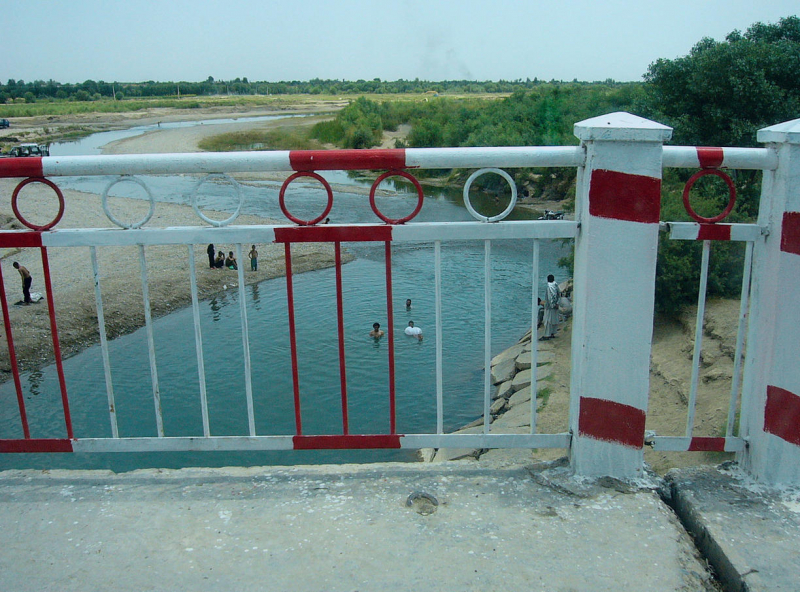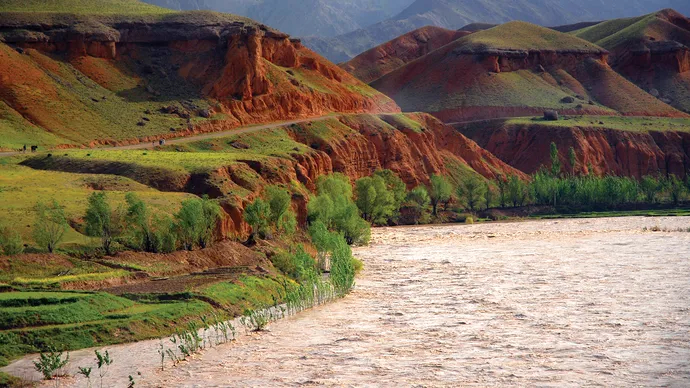Hari River

The Hari River (Persian: or Dari:, romanized: Har Rd; Pashto: ) or Herat River is a river that flows 1,100 kilometers (680 miles) from northern Afghanistan to Turkmenistan, where it produces the Tejend oasis before disappearing in the Karakum Desert.
It is known as the Tejen or Tedzhen river in Turkmenistan and flows near to the city of Tedzhen. The Arius was the name given to it by the Ancient Greeks. It was called as the Tarius in Latin. A portion of this river flows through Iran. The river rises in the Baba mountain range, which is part of the Hindu Kush system's expansions, and flows west in a reasonably straight line.
The river meets the Jam River about 200 kilometers (120 miles) upstream from Herat, at the site of the Minaret of Jam, the world's second highest ancient minaret near 65 meters (213 ft).
The Hari river is a river in western Afghanistan that runs south of Herat. The Paropamisus Mountains (Selseleh-ye Safd Kh) on the right side of the river made the region around Herat notable for its fertility and thick vegetation. The river bends northwest, then north beyond Herat, creating the northern section of the Afghan-Iranian border. This river is one of the longest rivers in Turkmenistan.
Length: 1100 km








